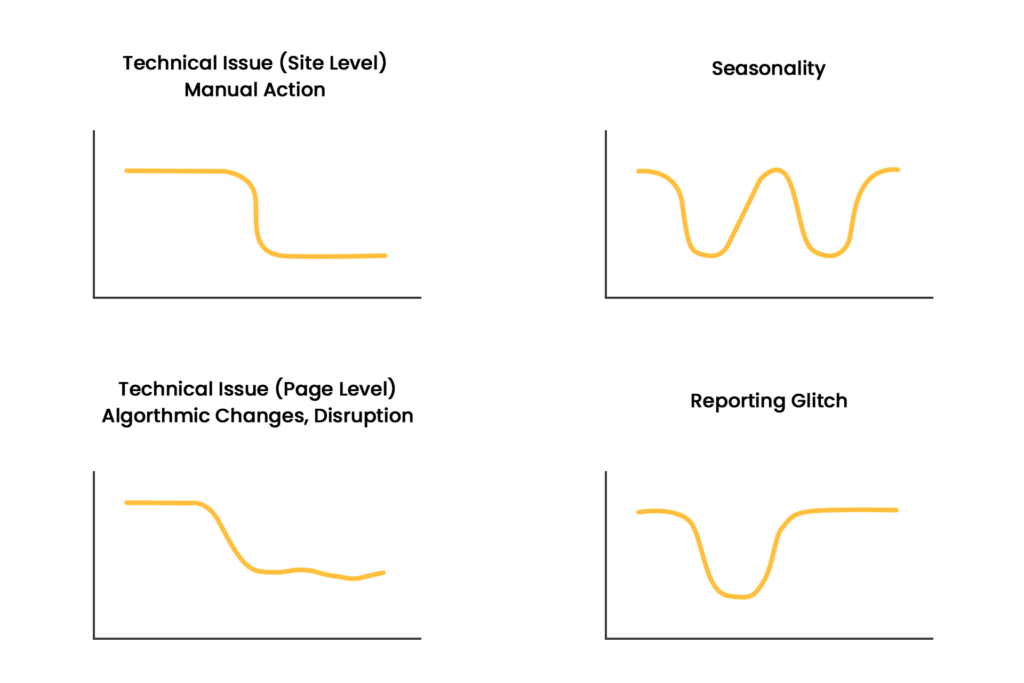You have worked extremely hard on improving your website’s SEO and have witnessed an increase in search traffic as a result of it. You’re pretty confident that it’s only uphill from here until one day you see your website analytics and you find out that your organic search traffic has dropped.
What should you do? You’re pretty sure that your On-Page SEO, Off-Page SEO and Technical SEO is on point. You have no idea what went wrong.
There are plenty of reasons why your organic search traffic can drop suddenly and it may not be straightforward to identify the reason. Thankfully, most of them can be reversed.
According to Google, the best way to identify the reasons for a sudden organic search traffic drop is to look at the performance report in Google Search Console.
What is Google Search Console?
Google Search Console is a free tool provided by Google that can help you measure your site’s organic search traffic and performance, fix issues and improve overall search performance.
If you haven’t connected your website to Google Search Console, you should. The tool provides tons of important information that can help you improve your website rankings. Here’s a guide by HubSpot that you can follow to start using this tool.
Main causes of Sudden Search Traffic Drops
As I mentioned before, there can be a lot of reasons for sudden drops in search traffic. The best approach to identify the reason will be to check the Performance report in Google Search Console.
When you look at the Performance Graph, it might look like one of these illustrations below. To know what they could potentially mean, read ahead.

There are five main reasons why organic search traffic can drop suddenly:
- Technical Issues: Technical issues prevent Google from crawling and indexing your pages. These issues can be site-wide or at page level. If your website is down, then that’s a site-wide issue that needs to be solved and you’ll see a sudden sharp fall in search traffic. If the issue is at the page level, for example, some of the pages are blocked by robots.txt, misplaced noindex tag, etc, you’ll see a gradual fall in search traffic.
- Security Threat: Sometimes, when websites don’t use HTTPS, the users are shown a security warning before entering the website and this can dissuade them from visiting the website. Such websites will see a drop in search traffic.
- Manual Actions: Google has a set of guidelines that all websites should adhere to. Any websites that do not comply with Google’s guidelines can be omitted from Google Search. Manual actions hit hard and there will be a sudden drop in search traffic.
- Algorithmic Changes: To improve user search experience, Google continuously makes updates in its algorithm and these algorithmic changes can often change how websites appear in search results. This might lead to a drop in search traffic. It’s best to stay updated with the latest changes in Google Algorithm to avoid any search traffic drops.
- Search Interest Disruption: User behaviour can change demands in certain search queries. This can be due to new trends emerging or seasonality throughout the year. These traffic drops are due to external influences and there’s nothing much you can do about it.
Analyse the Organic Search Traffic Drop Pattern
A chart is worth a thousand words. Using Search Console you can analyse if your search traffic has dropped due to a manual action by Google, a technical issue or just because of seasonality.
There are various tweaks that you can make in the Performance Report to analyse the traffic drop.
- Change the Date Range: By changing the date range from the default of 3 months to 12-16 months, you can make sure that the traffic drop doesn’t happen every year.
- Check for Security Issues and Manual Actions: In the Search Console, you can select the Security and Manual Actions option from the left navigation to see if any issues have been detected.
- Use the Comparison Filter: You can compare data from one period to data from a previous period. This will help you identify what has changed exactly. You can look at differences for particular search queries, pages, countries, devices, etc.
- Look at the Coverage Information: This is extremely important. You can look at the coverage information to see if there are any errors that are preventing the pages from being indexed properly.
Remember that most of the traffic drops can be reversed and are often a result of some minor issue. Bookmark this blog post to come back to it if you ever experience a drop in search traffic and want to know exactly why it happened.
